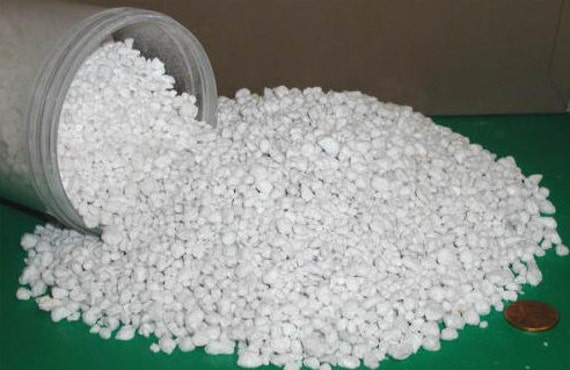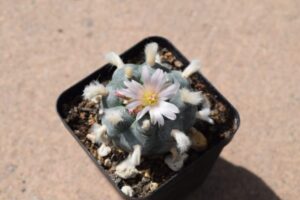Perlite, an intriguing volcanic glass, has garnered attention among horticulturists and plant enthusiasts alike for its myriad benefits when used in soil for cacti and succulents. This lightweight material is not only functional but also enhances the aesthetic appeal of potted plants, making it a favorite choice for creating a visually captivating garden. Understanding the compelling attributes of perlite can be instrumental in enriching the growth conditions for these remarkable plants.
In this article, we will delve into the myriad benefits of incorporating perlite into your cactus and succulent soil. Whether a seasoned gardener or a passionate hobbyist, the unique properties of perlite can transform your plant care regimen into an engaging endeavor.
Exploring the Unique Composition of Perlite
Perlite is formed from a naturally occurring volcanic glass that, when heated, expands to create small, white, lightweight granules. This remarkable transformation occurs at high temperatures, causing the glass to pop—much like popcorn. These expanded particles are renowned for their porous nature, providing a structure that is both functional and visually pleasing.
The first notable characteristic of perlite is its excellent aeration properties. The large surface area and numerous voids within the granules facilitate air circulation around the roots, allowing for healthy growth. This natural ability to increase porosity in the soil mix combats the common issue of overly compacted soil, which can suffocate the roots of cacti and succulents. Efficient aeration is crucial for maximizing root health and overall plant vitality.
A Versatile Moisture Management Tool
Another compelling benefit of perlite lies in its remarkable moisture retention capabilities. While cacti and succulents thrive in arid environments, an appropriate balance of moisture is essential for their health. Perlite acts like a sponge, absorbing excess water and releasing it slowly to the surrounding soil. This characteristic is vital for preventing root rot, a common issue faced by succulent enthusiasts. By strategically employing perlite within the soil, you can achieve the delicate equilibrium that these drought-tolerant plants require.
This moisture-retaining quality not only benefits the plants but also aids novice gardeners who may struggle with overwatering. The addition of perlite to the soil mix provides a safety net, helping to mitigate the risk of waterlogging by creating well-draining conditions.
Creating an Aesthetic Appeal
Beyond its functional advantages, perlite adds an organic aesthetic appeal to any container garden. The distinctive white color and contrasting texture create a striking visual effect when sprinkled atop the soil. This decorative layer not only enhances the overall look of your potted arrangements but also provides critical benefits, such as preventing moisture loss due to evaporation. Aesthetically pleasing and functional, perlite offers the best of both worlds for plant enthusiasts.
Crafting the Perfect Potting Mix
In the quest to cultivate thriving cacti and succulents, achieving the right potting mix is paramount. Perlite is often used in conjunction with other materials such as potting soil, sand, or coconut coir, resulting in an optimal blend tailored for succulent growth. A mixture containing 30-50% perlite alongside high-quality organic potting soil invites an ideal synergy, promoting healthy roots and robust growth.
By employing perlite in your potting mix, you also introduce a lightweight element that eases the overall weight of your potted arrangements. This feature is particularly advantageous when working with larger containers or when optimizing for easier maneuvering around your gardening space. An effective potting mix promotes not only structural integrity but also enhances the overall health of the plants within.
Environmental Considerations and Sustainability
With a growing emphasis on sustainability in gardening practices, perlite emerges as an environmentally friendly soil amendment. Its production involves minimal ecological disruption, and it is non-toxic to plants and pets alike. As gardeners increasingly strive to contribute positively to their local ecosystems, adopting perlite in their soil mixes can be seen as a responsible choice in fostering healthy plant life.
Moreover, due to its inert nature, perlite doesn’t decompose over time, making it a durable solution for long-lasting soil enhancement. This longevity significantly reduces the need for frequent soil amendments, contributing to a more sustainable gardening approach.
Tailoring Perlite Usage to Specific Plant Needs
Understanding the specific requirements of various succulent species is crucial when determining the ideal ratio of perlite to other components in the potting mix. For example, a denser succulent like Echeveria may benefit from a higher perlite concentration to ensure drainage, while more drought-resistant varieties may require a different formulation. Observing the needs of each plant and adjusting accordingly will yield the best results in terms of health and growth.
Incorporating perlite into your cactus and succulent soil brings forth considerable benefits, both functional and aesthetic. With its unique composition enhancing aeration and moisture management, it allows for healthier root systems and improved plant vitality. Beyond its practical applications, perlite also elevates the visual allure of your arrangements, blending beauty with botanical necessity. Furthermore, its environmentally friendly characteristics make it an exemplary choice for gardeners aiming for sustainable practices. Whether you are an experienced cultivator or a budding enthusiast, integrating perlite into your soil mix is a transformative step toward nurturing flourishing cacti and succulents.





Leave a Comment